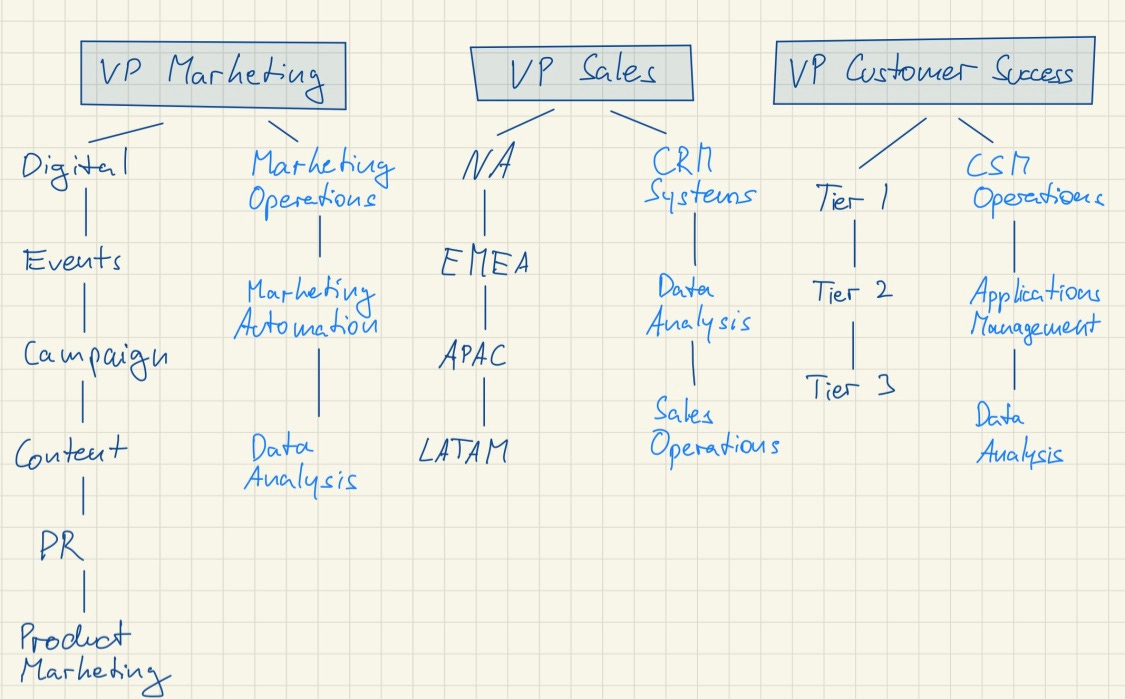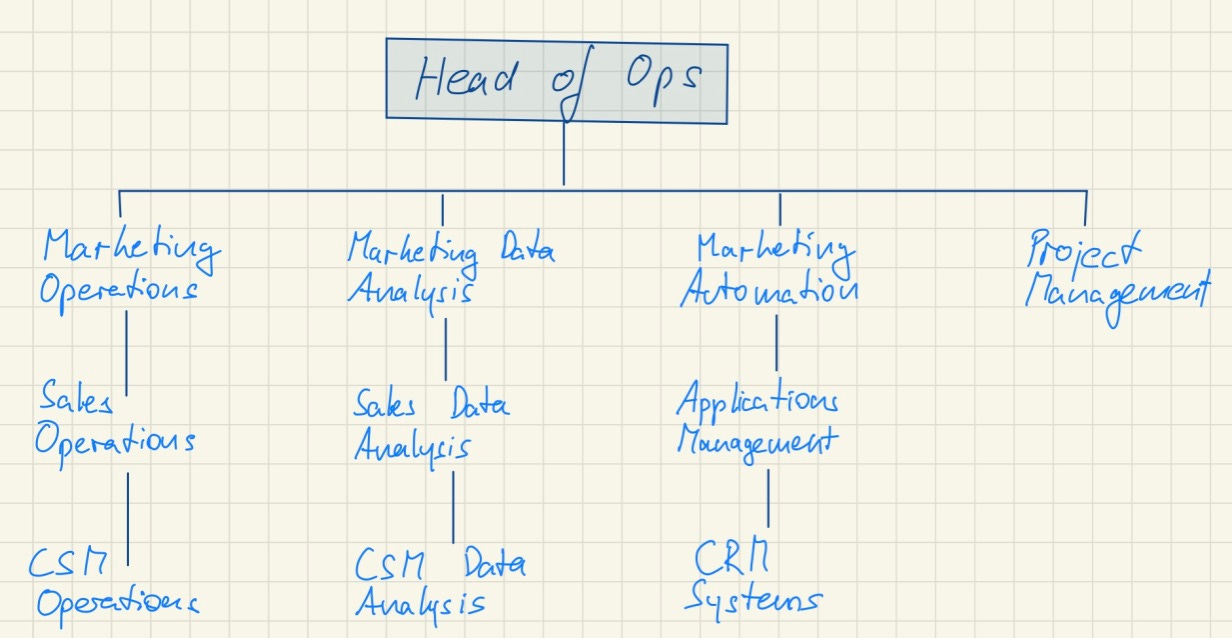Building ops from the ground up is both exciting and daunting. The reasons vary why a company chooses to set up a dedicated team. Often, the organization has been working in silos for some time. Siloing happens because different departments grow at different speeds. The company’s current needs, strategic considerations, budget constraints and its culture dictate their growth.
At some point, management recognizes the need for more collaboration between different teams. Voilà, ops is born!
Let’s decide how to structure it.
Life without ops
This is what a typical organization looks like before a dedicated ops team starts to coordinate:
Each leader is obligated to meet certain quotas, scores or revenue numbers. All those individual goals contribute to the company mission. But the goals are also interrelated and depend on each other. Without a sales team, the leads generated by the marketing team are worthless. Each of the three leaders knows that. Yet the structure induces them to focus on their department.
With a structure like that, it is not surprising that ops remains an afterthought at many companies. Sales ops / marketing ops / customer success management ops etc. support their team with processes and analyses. But their contribution is masked because ops does not produce leads or revenue. The leaders of those departments often don’t know what it means to be an applications manager, systems architect or data analyst. So ops ends up being poorly managed and supported.
With that limited purview, the potential of ops to contribute to the company mission remains stifled.
First steps
The company has decided to install a dedicated ops team that coordinates between departments. The goal: Make the whole company move faster. At that moment, the first org chart often looks like this:
With the new head the company finally has a person overseeing the processes between all departments. So what’s the problem here? Within the ops team, the people supporting each department are still siloed. They are better supported and managed now, but structural issues remain. Depending on the company culture, the infighting between departments now happen within the ops team and the people supporting different department.
Those issues are mitigated by e.g. regular cross-function meetings (e.g. where sales ops share what they are doing with marketing ops’ leads). But there are better options.
A better setup
Initially, the siloed structure of the company is replicated on the ops level as well, leading to the same issues that plague the company as a whole. It is almost like a fractal. The easiest solution for the communication issues is to change reporting lines and manage by function:
In that setup, cross-function meetings become obsolete. The focus shifts from “How can I support my department?” to “What is best for our company?”. It is a powerful move, and there is an added benefit: Managing by function is easier.
It is difficult to find a systems architect that is also well versed in data analysis. Instead, companies should hire a systems architect to oversee other systems architects. And do the same for the other functions. Those managers have the right background to understand what core competencies they need for their team. They also know what investments are necessary to support it (e.g. tech, training, headcount).
🚨Attention🚨
As good as that sounds, beware of creating new silos. The new teams can lack the right business context and insights. A team of specialists easily develops the most efficient system instead of the solution that the end user actually needs.
In smaller ops teams, the head will usually oversee the work being done by each team, and can tamper those tendencies. In larger teams, the task is delegated to cross-functional positions. In any case, there needs to be a feedback mechanism for the departments that the ops team supports.



